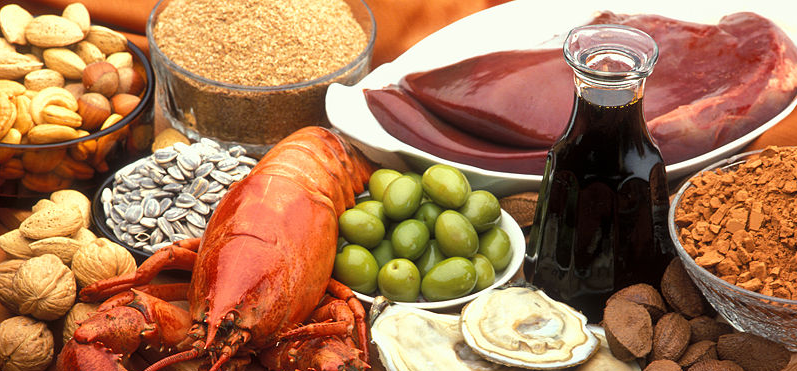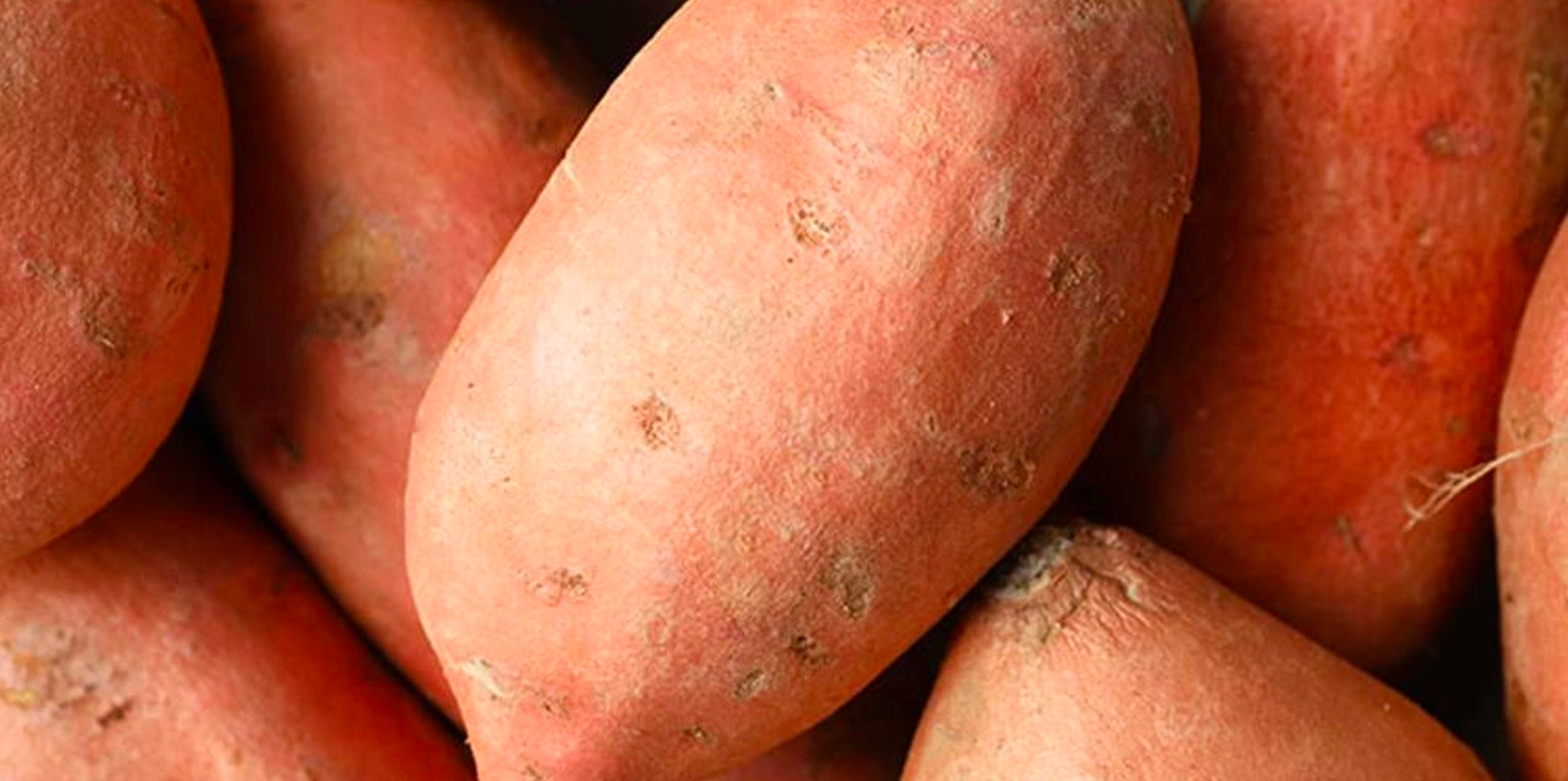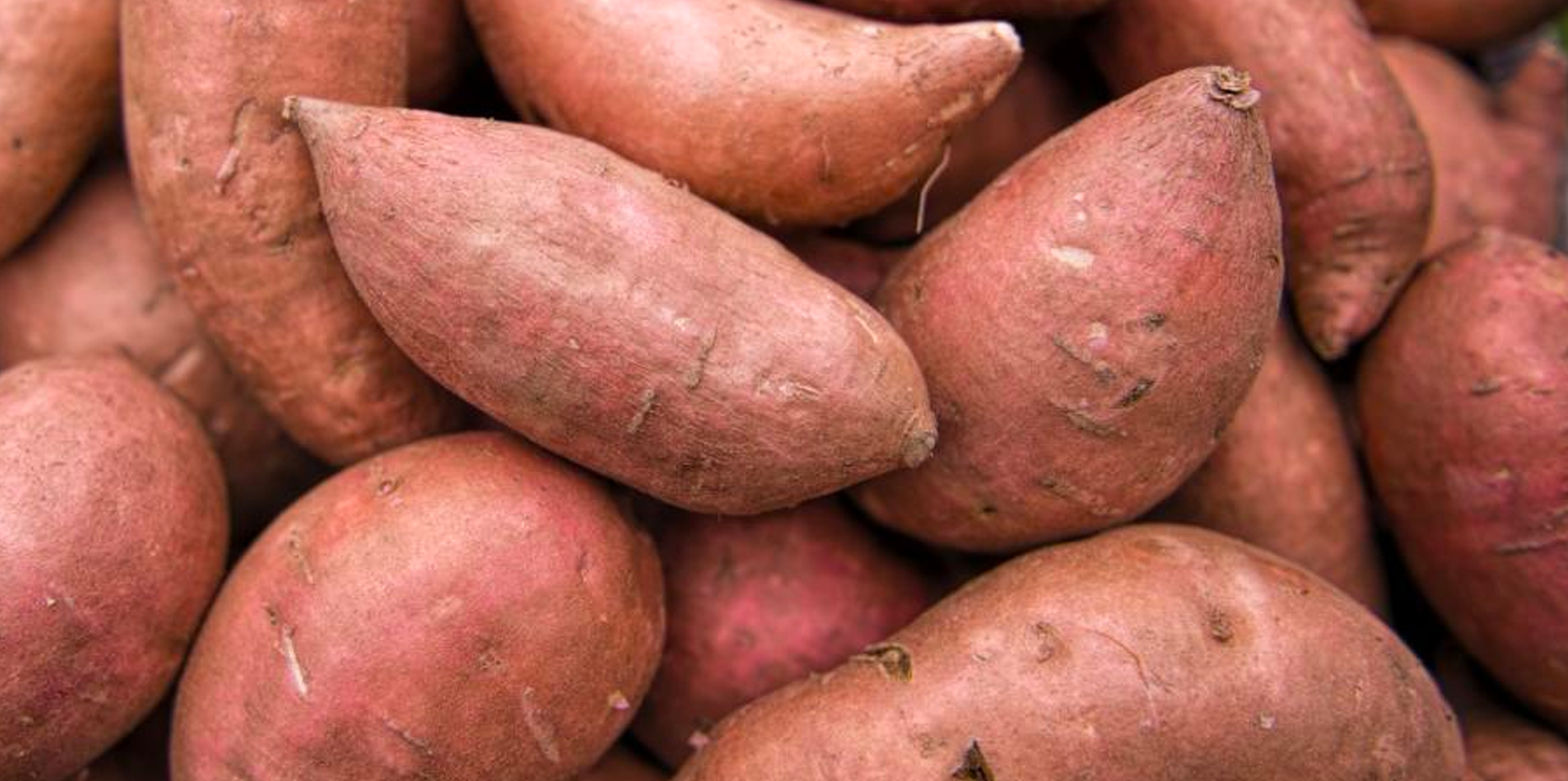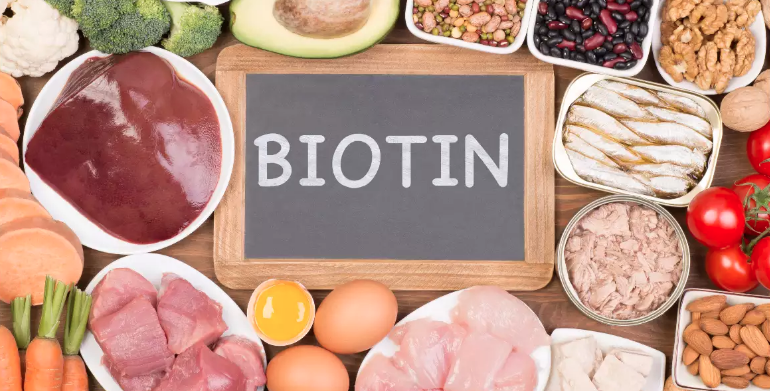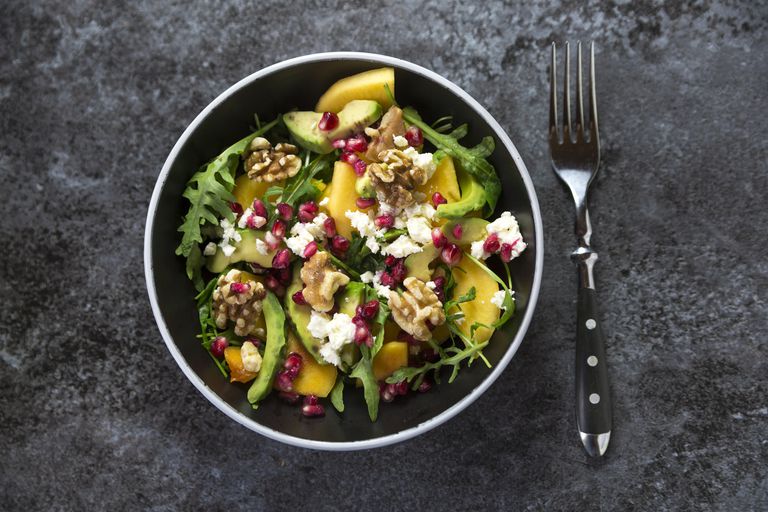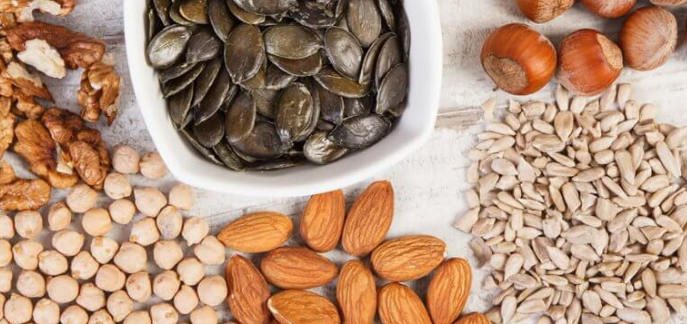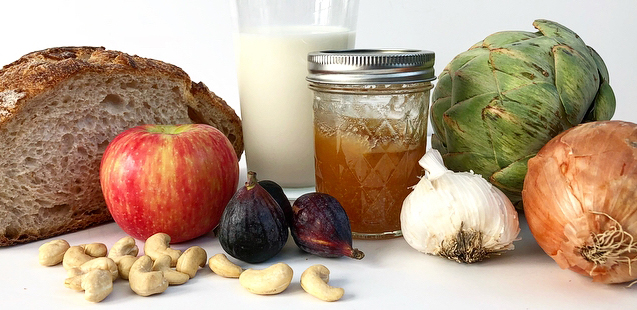Potassium is a vital macromineral, which means more is required throughout the body (1). Other macro minerals include calcium, magnesium, phosphorus, and more (2). The body needs these macro minerals in order to function properly. Keeping your potassium levels at the right amount reduces your risk of many types of ailments such as high blood pressure, heart disease (4), stroke, kidney stones, and it can even contribute to keeping your weight healthy (5, 6).
Table of Contents
Foods High in Potassium
The recommended serving size for adults ranges from 2600 mg to 3600 mg, and unfortunately, many people don’t meet this requirement and may experience symptoms of potassium deficiency. But, there’s good news. You can easily start changing up your food habits and fill in any potassium gaps in your diet. Here are the foods high in Potassium:
1. Avocados
You may be surprised to find that the first food listed isn’t bananas. Although bananas are a good source of potassium, did you know that avocados pack in three times more potassium than our yellow fruit friends (7)? And, that’s just one avocado. If you’re watching your weight, stick with half an avocado a day, or even a quarter mixed with other healthy food sources. Avocados are considered the good kind of fat (8), so they’re necessary for optimal health, but they’re still fat. So, be sure to keep an eye on your portion sizes.
Avocados are truly a one-of-a-kind fruit with a wide range of versatility in the kitchen. Their creamy texture gives you a plethora of options to add it to. Enjoy avocados with eggs, on toast, in smoothies, in tacos, salads, and much more. Don’t be afraid to add a little avocado in for a healthy dose of potassium and healthy fat.
Summary: Avocados are packed with three times the amount of potassium bananas have. Consuming 1/4-1/2 an avocado daily is plenty and full of fiber, good fats, and potassium. They go well with eggs, toast, smoothies, tacos, and salads.
2. Mushrooms
Mushrooms can be a tasty way in addition to many throw-together meals. White mushrooms have the most potassium at 300 mg per serving (9), but other mushrooms can be healthy for a variety of reasons. The most common types of mushrooms used to cook with are the white button, shitake, and portobello, but did you know there is an entire subset of wild mushrooms that can be beneficial to health as well?
They’re most commonly called adaptogens and can be found in many powders, supplements, and even teas. Lion’s mane mushroom is a nootropic and extremely beneficial for brain health, including memory (10, 11). Reishi mushroom is great for stress relief, as a few examples (12). These types and more can be helpful to boost the immune system in general, and they all contain potassium. (13)
Summary: Mushrooms are packed with potassium, with 300 milligrams per serving. The most common mushrooms used to cook with include white button, shitake, and portobello varieties. Some wild mushrooms may even benefit health, including Lion’s mane mushroom which can boost brain health and memory, and reishi mushrooms which can relieve stress.
3. Green Vegetables
Broccoli, spinach, and other leafy greens like swiss chard and kale are all high in potassium (14, 15). Packing in around 167 mg in only one cup, they’re a must for most diets. To get all the different phytonutrients, it’s best to eat a wide variety of each. Not a fan of these veggies in their raw form? Try cooking them at low heat, first. Vegetables cooked over a certain temperature lose their texture along with plenty of nutrients. Make sure your veggies still have their crunch after cooking them.
Use mixed seasonings if you’re new to cooking and mix with onion and garlic to start off. You can even make a quick snack dip of broccoli with hummus or ranch to make it super simple.
Summary: Broccoli, spinach, swiss chard, kale, and other green vegetables are all high in potassium. On average, they contain 167 milligrams per cup. Avoid overcooking these vegetables to reduce nutrient breakdown or eat them in their raw forms with some hummus, in salads or on sandwiches.
4. Potatoes
Potatoes often get a bad rap for being unhealthy, but it all depends on how you cook them. If you soak and deep fry your potatoes in a vat of oil, then it’s better to skip them. However, potatoes can be a part of an extremely healthy diet if prepared right. A simple baked white potato has a whopping 867 mg of potassium (16). And, sweet potatoes have over 100 mg more. Sweet potatoes are also high in vitamin A and many essential nutrients (17).
Potatoes are also high in vitamin B6, vitamin C, fiber, and magnesium (18). Be sure to grab some white and sweet potatoes on your next grocery run to add in an extra boost of nutrition.
Summary: Potatoes are very nutritious, especially when baked instead of fried. One baked potato has 867 milligrams of potassium, making it an excellent source of this macromineral. Sweet potatoes have over 100 milligrams, and is also high in vitamin A and other nutrients. Add potatoes and sweet potatoes to your daily intake to boost potassium.
5. Many Other Fruits
Avocados and bananas aren’t the only front-runners when it comes to potassium. Guava, kiwi, pomegranate, cherries, blackberries, lychees, strawberries, mangos, oranges, cantaloupe, grapefruit, apricots, honeydew, and even some dried fruit are all filled with potassium (19, 20, 21). Try dried fruit like dates, raisins, or prunes, which are especially high in it. Like any other food type, get in the most variety that’s possible for you and your taste buds.
Some others that aren’t usually as popular include, soursop, mulberries, persimmon, jackfruit, passion fruit, elderberries, and more. All fruit especially elderberry can play a critical role in boosting your immune system (22), so try some new ones you’ve never had today. Your next favorite fruit may even surprise you.
Summary: Guava, kiwi, pomegranate, cherries, blackberries, lychees, strawberries, mangos, oranges, cantaloupe, grapefruit, apricots, honeydew, and dried fruits are full of potassium. Other unique, high-potassium fruit options include soursop, mulberries, persimmon, jackfruit, passion fruit, and immune-boosting elderberry.
6. Eggplant
One whole eggplant contains 1,049 mg of potassium (23). Eggplants also contain many beneficial antioxidants, which help to protect the body from cell damage (24). Along with potassium, they’re high in copper, B vitamins, and fiber, too (25). Many believe that eggplants and other nightshade vegetables like tomatoes and peppers can be harmful to certain groups’ health. While research between specific food groups and sensitivities need to be examined further, there is currently no proof that nightshades harm your health (26, 27).
For now, the benefits of these types of vegetables outweigh the cons. Listen to your own body and find what works best for you.
Summary: A whole eggplant has 1,049 milligrams of potassium and is full of antioxidants, copper, B vitamins, and fiber. It’s a perfect food to add to your daily diet. Roast it in the oven, add it to stir-fry, or try it grilled.
7. Cucumbers
While cucumbers don’t have the same punch of potassium as many of these foods, they can be an important addition to a healthy diet. They contain 147 mg per 100 g, and they contain practically zero calories. They’re a perfect addition to a healthy diet for those looking to drop extra pounds. Cucumbers also can help lower blood pressure and contain a large variety of antioxidants. (28)
Make life easy on yourself with some easy-to-make cucumber recipes. Throw together cut cucumbers with tomatoes and onions, shaved carrots, vinegar, olive oil, salt and pepper for a refreshing side dish. Or, you can make a fresh cucumber juice in a juicer. Lastly, throw some sliced cucumber in your water for the easiest way to consume vegetables around.
Summary: Cucumbers contain 147 milligrams of potassium per 100 grams, in addition to antioxidants and minimal calories. They help support a healthy weight and lower blood pressure. Add it to your favorite salad, toss it together with onions and tomatoes, add to smoothies, or simply juice it for a nutritious, fun drink.
8. Beans and Legumes
Many different types of beans and legumes are filled with tons of potassium (29, 30). From lima beans to pinto beans, kidney beans, soybeans, lentils, baked beans, and even more, you’re bound to find the one you like. Just one cup of baked beans has 906 mg. Chickpeas pack in almost 2,000 mg. And, the winner of the bean family is mung beans at 2,579 per cup.
Mung beans can be intimidating to cook, but they don’t have to be. When you boil mung beans, they tend to have a sprouted look depending on which type you get. Not to worry. This is edible and part of why they are so healthy. You can also buy mung beans in dried and flavored snacks to make eating them simple and fun. They come in different types of flavors like bacon, garlic, and more.
Summary: Beans and legumes are filled with potassium. One cup of baked beans contains 906 milligrams of potassium, chickpeas 2,000 milligrams, and mung beans are the highest with 2,579 milligrams. However, all beans contain great sources of potassium, so there are plenty of options to choose from.
9. Pumpkins
Pumpkins are an excellent source of potassium (31). Just one cup of pumpkins has 393 milligrams of potassium. Pumpkins are also high in vitamin c, fiber, and beta carotene (32, 33). They’re a great way to vary your diet with nutrients and different phytonutrients as well. Pumpkins are best to enjoy in the fall because they’re in season and ready to eat. The fall is the time to get the best, fresh pumpkins and bang for your buck. Pumpkin seeds are another great addition to a healthy diet. Pumpkin seeds are high in antioxidants and magnesium (34), which are necessary for optimal functioning in the body. They can even reduce the risks of certain cancers like prostate and bladder cancer (35).
Pumpkins and pumpkin seeds go great in recipes with cinnamon and even butternut squash. You can even make fresh pumpkin bread, pie, cheesecake, and more desserts to add in a nutritional kick to your sweet tooth treats. You can even throw pumpkin into a homemade chili for a seasonal and warming soup.
Summary: One cup of pumpkin has 393 milligrams of potassium, making it an excellent source. Pumpkin is also high in vitamin c, fiber, beta carotene, magnesium, and antioxidants. This healthy vegetable is perfect for homemade breads, pie, and desserts, or even added to homemade chili or soups.
10. Dairy
Milk and yogurt are the highest sources of potassium (36, 37). Milk has 366 milligrams of potassium in just one cup. Yogurt has 240 milligrams in a cup. Low-fat can be a better option for most because dairy tends to have a high amount of content, especially if you’re trying to lose weight. Greek yogurt is a wonderful and healthy alternative to regular yogurt, too. You can even get Greek yogurt ice pops for a quick treat. Make sure to get plain, unflavored yogurts for the healthiest choice. Plain yogurts have the least amount of added sugar and additives.
If it’s too plain, simply add in your own frozen or regular blueberries, strawberries, kiwi, nuts, seeds, or homemade granola. That way, you’ll know exactly what’s going in it. Some people who can’t tolerate dairy milk do benefit from Greek yogurt or even a non-dairy alternative. Although these types don’t have as much potassium, non-dairy alternatives usually come fortified with potassium, too.
Summary: One cup of milk contains 366 milligrams of potassium, and yogurt has 240 milligrams. Choose low-fat dairy options, especially if you’re trying to lose weight. Greek yogurt is a great alternative to regular yogurt because of its higher protein content. Choose unflavored yogurts to reduce added sugar and additive intake, then flavor with your favorite fruit, nuts, seeds, or granola.
11. Juice
Some juice is another easy way to sneak in some extra potassium into your diet (38, 39). Beyond fruit, fresh juice can be a wonderful alternative for picky eaters like children or even the elderly who might have a hard time consuming some types of fruit. The fruit juices that are highest in potassium include carrot juice, pomegranate juice, passion fruit juice, orange juice, and vegetable juice to name a few (40, 41). There are a few additions you can add to your juices if you make them at home to kick up the flavor. Some include lemon, ginger, apple, and more. Get creative with it and change it up each day.
The healthiest way to consume these types of juices is through a juicer from your home or a shop. A lot of juices sold at supermarkets contain unnecessary additives and extra sugar, making them unhealthy in even medium quantities. Bottled orange juice can include almost as much sugar as a can of coke, for example. You might think it’s the sugar from the fruit, but that’s not always the case. Look carefully at the ingredients to see that it’s free from added sugar, high fructose corn syrup, and more harmful additives. Eating fruit and drinking fruit juice should be varied as much as possible to get all the health benefits, too.
Summary: Juice can be a great way to boost potassium intake. It’s best to make your own through a juicer, or purchase from a juicing shop. Many supermarket juices contain high amounts of added sugar. The highest in potassium are carrot, pomegranate, passion fruit, orange, and vegetable juices. When making your own juice, add fun flavors such as lemon, ginger, or apple to improve taste.
12. Some Fish
Many fish contain potassium, but the potassium difference per type of fish varies greatly. Wild Alaskan salmon, for example, has 500 milligrams of potassium in just one 3-ounce piece. Other fish that contain high amounts of potassium include tuna, halibut, trout, rockfish, and cod (42, 43). On the other hand, canned tuna only has 200 milligrams of potassium, while farmed salmon, swordfish, and haddock contain around 300 milligrams per average serving size. Wild fish contain different levels of nutrients, calories, and additives. Wild fish tend to have fewer additives and more nutrients.
Try not to eat too much of these types of fish regularly. Like most foods, it’s best to consume a wide variety of healthy foods to get the best benefits overall. Vary the types of fish you eat from oysters, sardines, and salmon to white fish, lobster, shrimp, and more. You’ll get a large variety of nutrients like iodine, zinc, omega-3 fatty acids, and healthy fats (44). Everyone’s diets depend on their specific circumstances regarding their overall health as well as their family health history. Pay attention to how you feel after eating certain foods and always listen closely to your body’s cravings and needs.
Summary: Fish is a great source of potassium and varies in amount depending on the type. Wild Alaskan salmon has 500 milligrams of potassium per 3 ounces, canned tuna 200 milligrams, and farmed salmon, swordfish, and haddock have 300 milligrams. Wild fish tends to have fewer additives and more nutrients. Consume a variety of fish including oysters, sardines, salmon, white fish, lobster, and shrimp.
Conclusion
Potassium is essential for the human body to function. Try out some new foods to make sure you’re getting the right amount of potassium in a day. That way, you can go on thriving and living your healthiest life.





